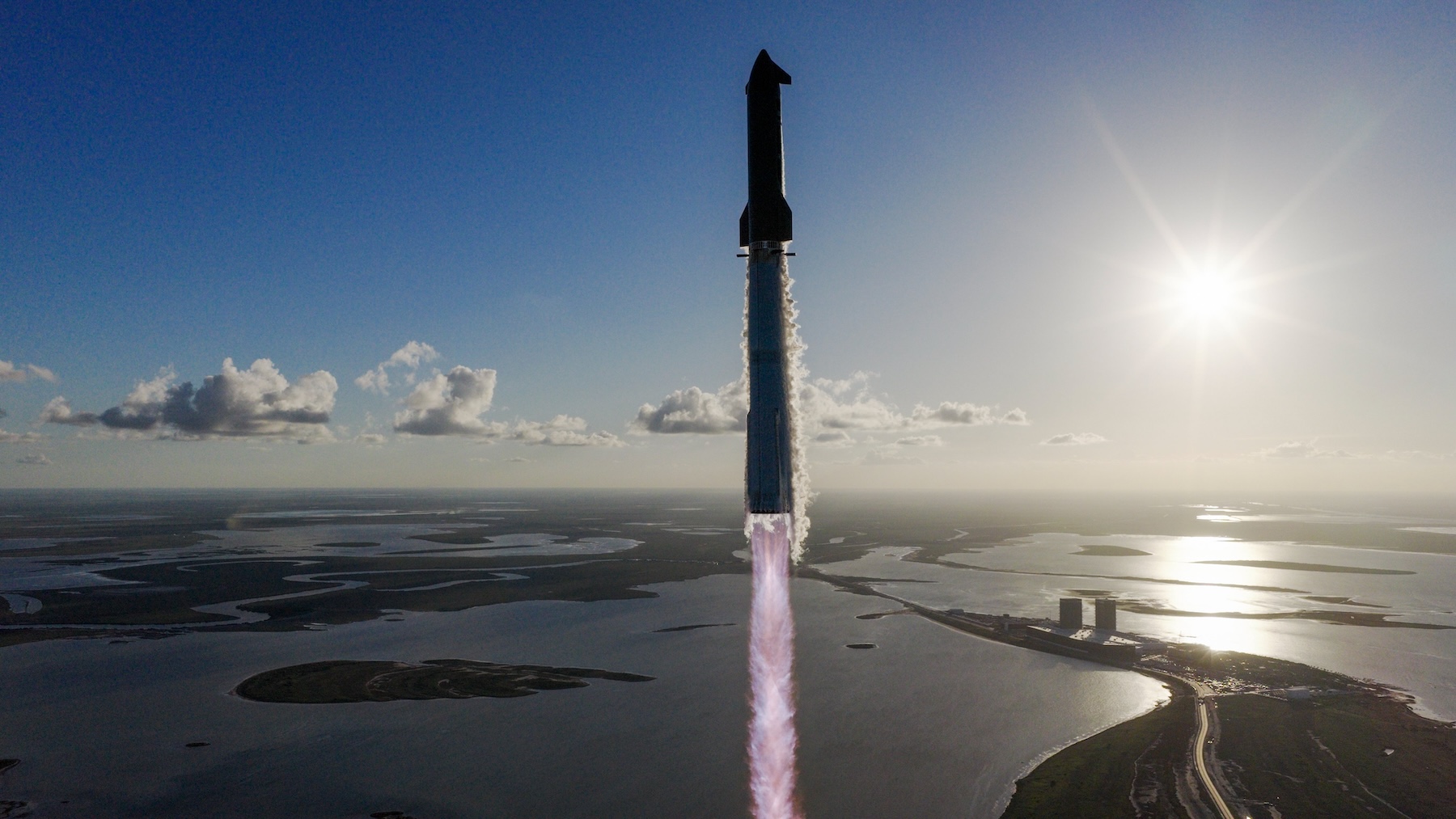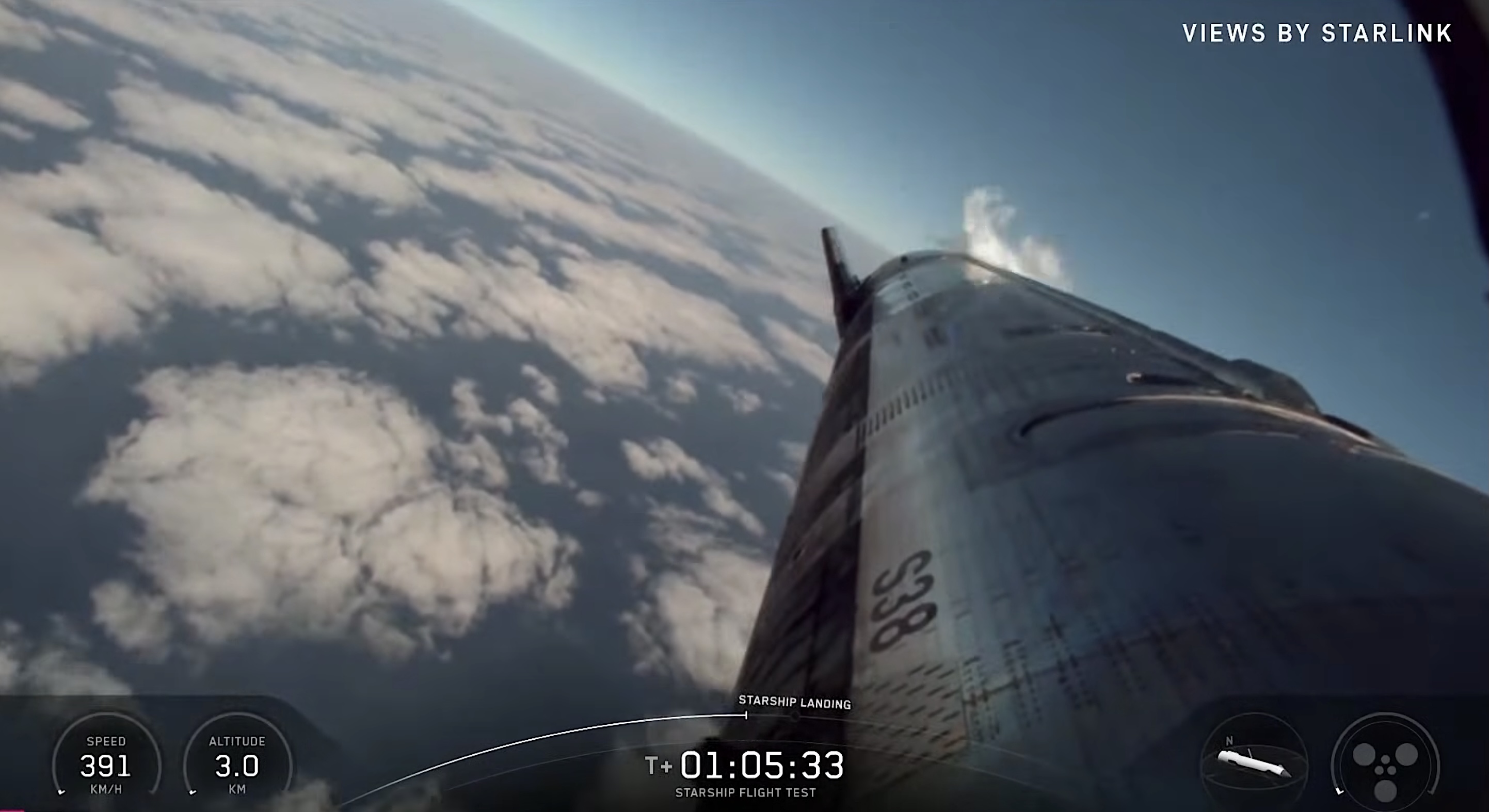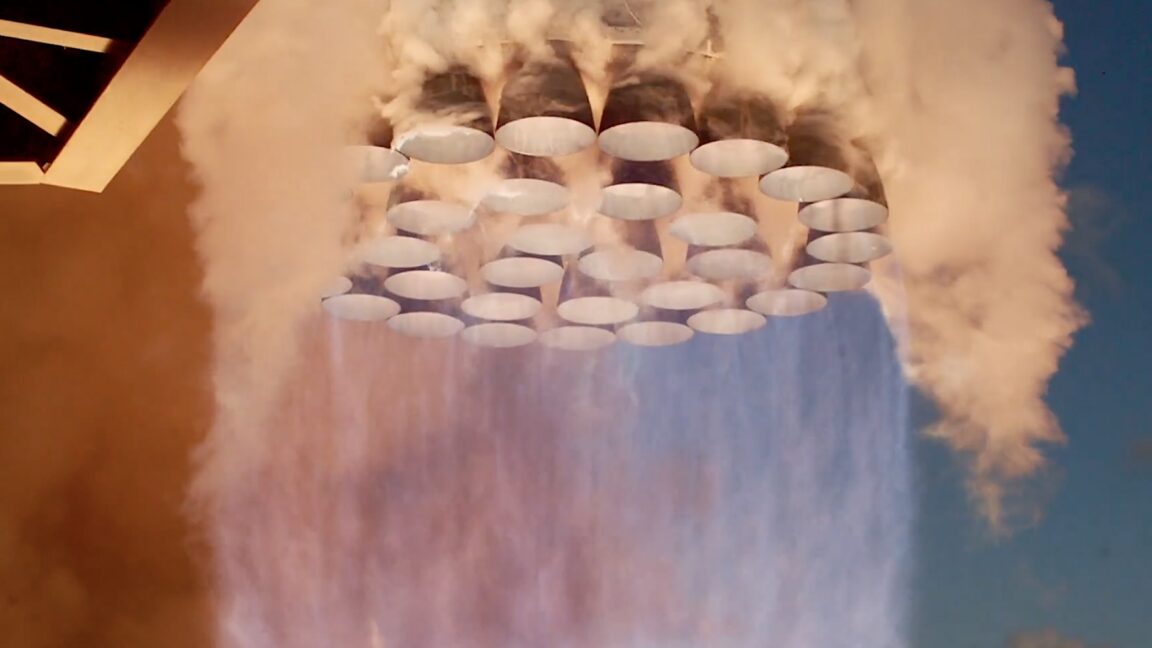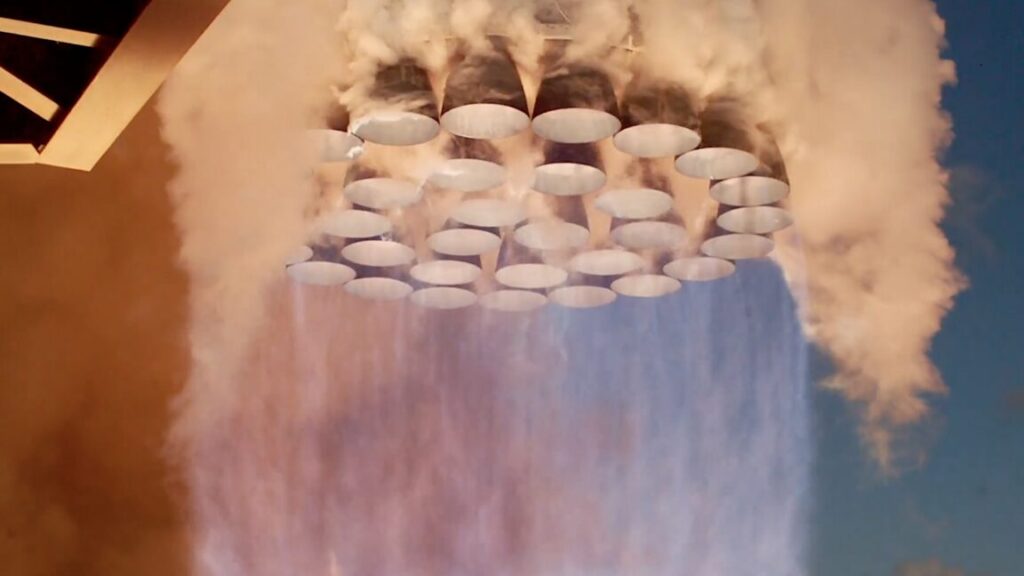SpaceX concluded a challenging but educational chapter in its Starship rocket program on Monday with a nearly perfect test flight that sent the stainless steel spacecraft from South Texas to the Indian Ocean.
The rocket’s thirty-three methane-fueled Raptor engines roared to life at 6:23 pm CDT (7:23 pm EDT; 23:23 UTC), generating up to 16.7 million pounds of thrust, far more powerful than any rocket before Starship. Moments later, the 404-foot (123.1 m) rocket began a vertical ascent from SpaceX’s Starbase test site in Texas, near the US-Mexico border.
From then on, the rocket executed its flight plan like clockwork. This was arguably SpaceX’s most successful Starship test flight to date. The only flight with a similar claim occurred on Monday a year ago, when the company caught a returning Super Heavy booster rocket in mid-air upon its return at the launch base after ascending to the highest fringes of the atmosphere. But that flight didn’t quite make it to space.
“Starship’s eleventh flight test achieved every goal and provided invaluable data in preparation for future generations of Starship and Super Heavy,” SpaceX wrote on X.

SpaceX did not attempt to recover the Super Heavy booster on this flight, but the goals the company set before the launch included attempting to guide the massive rocket stage to a precision landing in the Gulf of Mexico off the coast of South Texas. The booster, reused from a previous flight in March, validated a new engine configuration for its landing burn, first reigniting 13 of its engines, then shifting to five, and then to three for the final hover.
This all worked, along with just about everything else other than an indication on SpaceX’s live broadcast that the Starship Super Heavy booster stage lost one engine early in its descent. The malfunctioning engine did not have any impact on the remainder of the flight.

Chapter 11 Summary
This was the fifth and final flight of the second-generation Starship configuration, known as version 2, or V2. It was the eleventh full-fledged Starship test flight overall.
It took a while for Starship V2 to meet SpaceX’s expectations. The first three Starship V2 launches in January, March, and May ended prematurely due to problems with the rocket’s propulsion and early fuel leaks, interrupting a string of successful Starship flights from 2023. Another Starship V2 also exploded at a test stand in Texas in June, further marring the second-generation rocket’s record.
Click here to preview your posts with PRO themes ››
But SpaceX teams righted the program with a good test flight in August, the first time a Starship V2 flew all the way to splashdown. Engineers learned a few lessons on that flight, including the inadequacy of a new metallic heat shield tile design that left an orange smudge of oxidation on the side of the ship. They also found that another experiment with a portion of the ship’s heat shield showed promising results. This involved using a soft “crepe” material to seal the gap between the ship’s ceramic tiles and prevent super-heated plasma from reaching the rocket’s stainless steel skin.
Technicians installed the creped material in more locations for Flight 11, and a first look at the ship’s performance during reentry and splashdown indicated that the heat shield modification worked well.

After reaching space, Starship shut down its six Raptor engines and coasted across the Atlantic Ocean and Africa before reappearing for reentry over the Indian Ocean. During its time in space, Starship deployed eight Starlink satellite mock-ups, which mimicked the larger size of the company’s next-generation Starlink spacecraft. These new Starlink satellites will only be able to launch on Starship.
Starship also reignited one of its six engines for a short maneuver to adjust the ship’s trajectory for reentry. With this done, the stage was set for the final act of the test flight. How would the latest version of SpaceX’s ever-evolving heat shield design hold up against temperatures of 2,600 degrees Fahrenheit (1,430 degrees Celsius)?
The answer: apparently pretty well. While SpaceX has brought Starships back to Earth in one piece several times, this was the first time that the ship survived reentry relatively intact. Live video streaming from cameras inside Starship showed a cloak of orange and purple plasma engulfing the rocket during reentry. This is now a familiar sight, thanks to connectivity to Starship via SpaceX’s Starlink broadband network.
Click here to preview your posts with PRO themes ››
What was different on Monday was the lack of any obvious damage to the heat shield or flaps during Starship’s descent, a promising sign for SpaceX’s chances of reusing the vehicle and its heat shield over and over again, without needing any maintenance. According to Elon Musk, this is the acid test for determining Starship’s overall success.
In the final moments of Monday’s flight, Starship deployed its flaps to perform a “dynamic bank maneuver” over the Indian Ocean, then righted itself and fired its engines to slow its descent for splashdown, simulating maneuvers the rocket will perform on future return-to-launch-site missions. This will be one of the main goals of the next phase of the Starship testing campaign, which kicks off next year.
Waiting for V3
It will likely be at least a few months before SpaceX is ready to launch the next Starship flight. Technicians at Starbase are assembling the next Super Heavy booster and the first Starship V3 vehicle. Once integrated, the booster and ship are expected to undergo cryogenic testing and static fire tests before SpaceX proceeds with launch.
“Focus is now shifting to the next generation of Starship and Super Heavy, with several vehicles in active build and test preparations,” SpaceX wrote on its website. “This next iteration will be used for the first orbital Starship flights, operational payload missions, in-space propellant transfer, and more as we work toward a fully and rapidly reusable vehicle to service Earth orbit, the Moon, Mars, and beyond.”
The Starship V3 will have larger fuel tanks to increase the rocket’s lifting capacity, upgraded Raptor 3 engines, and an improved payload bay to support the launch of real Starlink satellites. SpaceX will also use this version of the rocket for in-orbit refueling experiments, a milestone that has long been delayed in the Starship program and is now slated for sometime next year. In-orbit refueling is a critical enabler for future Starship flights beyond low Earth orbit and is essential for SpaceX to realize Musk’s ambition of sending ships to Mars, the long-standing goal of the company’s founder.
Click here to preview your posts with PRO themes ››
It is also needed for Starship flights to the Moon. NASA has contracts with SpaceX worth more than $4 billion to develop a human-rated Starship derivative for landing astronauts on the Moon as part of the agency’s Artemis program. The in-orbit refueling demonstration is a key milestone in NASA’s lunar lander contract. Doing so as soon as possible is extremely important for NASA, which has seen its Artemis lunar landing program slip, in part due to Starship delays.
Starship’s Path Ahead
None of this can really begin until Starship V3 is flying reliably and often. If the first Starship V3 flight goes well, SpaceX may try to put the subsequent vehicle—Flight 13—into orbit to validate the ship’s endurance in space. At some point, SpaceX will make its first attempt to return a ship from orbit for capture by the launch tower, similar to the way SpaceX has been catching Super Heavy boosters returning from the edge of space.
But initially, ground crews are wrapping up work on a second Starship launch pad, which has been designed to accommodate the upgraded and taller Starship V3 rocket. Monday’s flight was the last launch from Pad 1 in its current form. Differences between this pad and the second launch pad include a flame trench, which is a common feature at many launch pads around the world. Pad 1 was not built with a flame trench, but instead, features an elevated launch stand upon which the rocket sits before lifting off.
SpaceX is expected to overhaul Pad 1 in the coming months to reactivate it as a second launch pad option for Starship V3. All of this work is underway in Texas as SpaceX is preparing to bring more Starship launch pads online at Cape Canaveral Space Force Station and Kennedy Space Center in Florida. SpaceX says it needs a large number of pads to ramp up Starship to monthly, weekly, and eventually daily flights.
Source : Ars Technica




